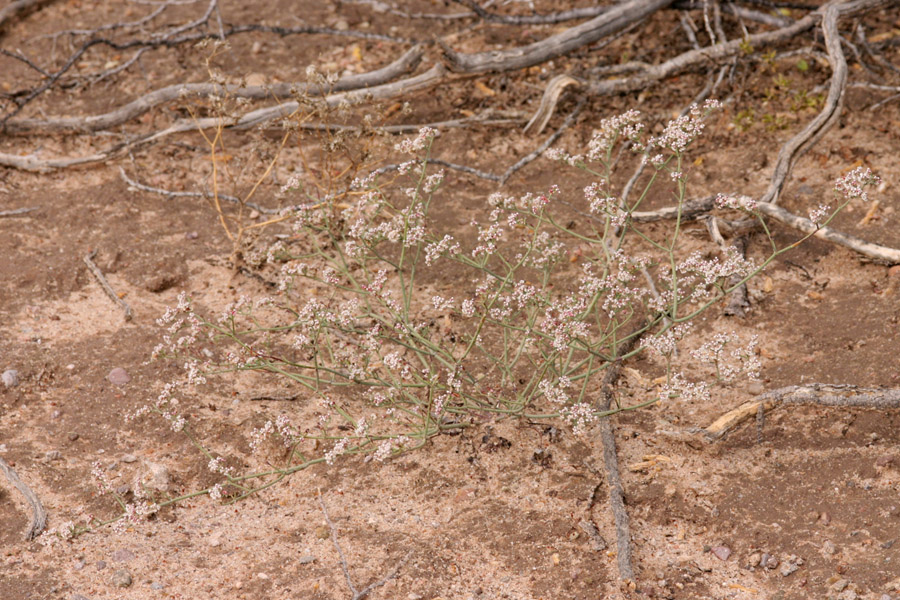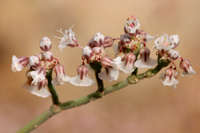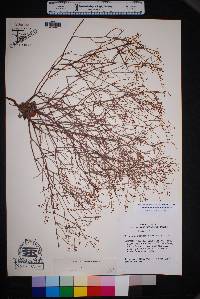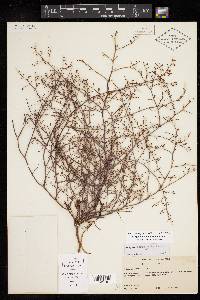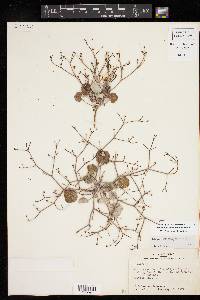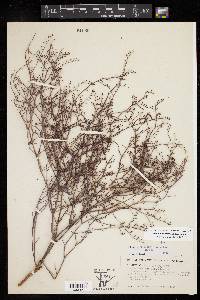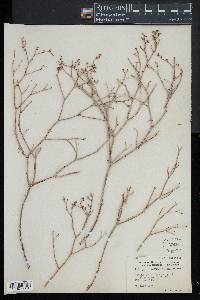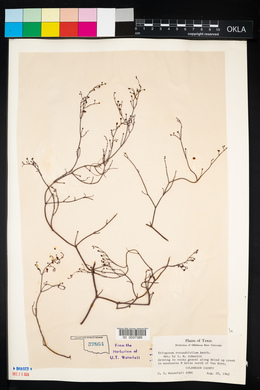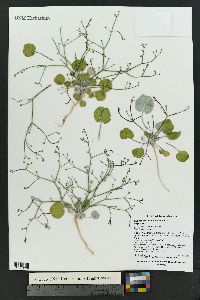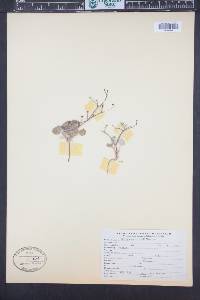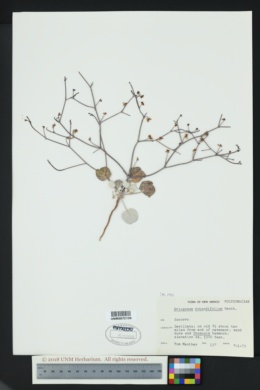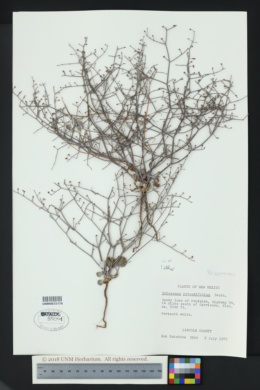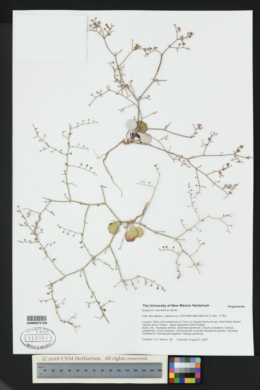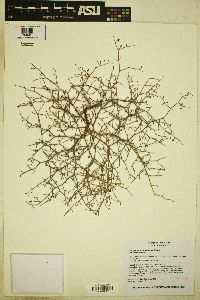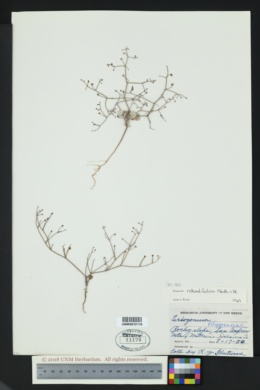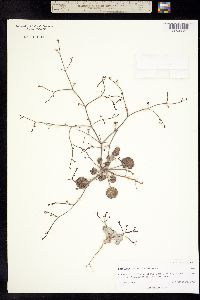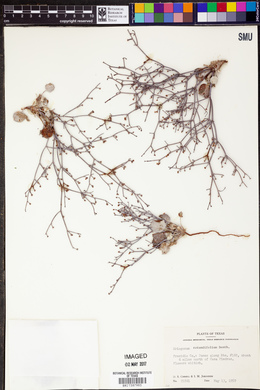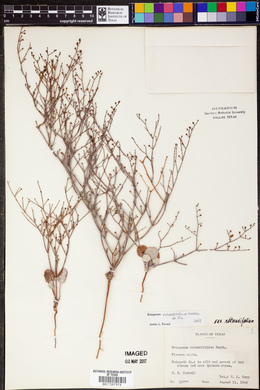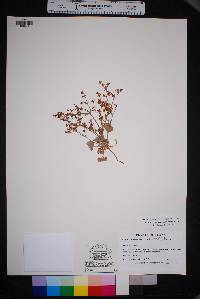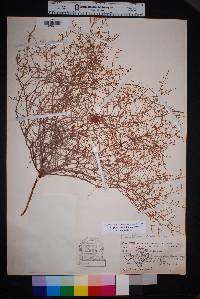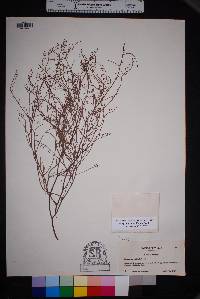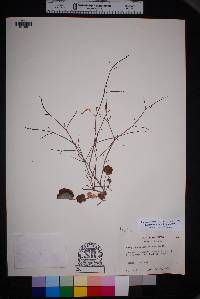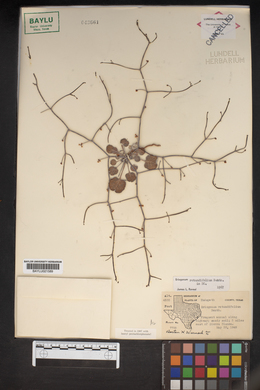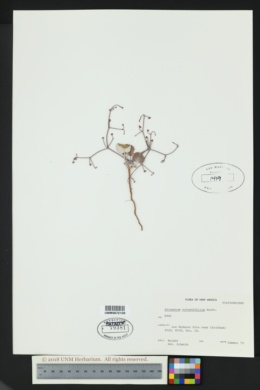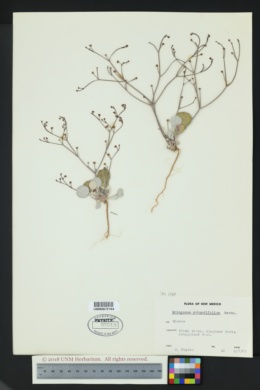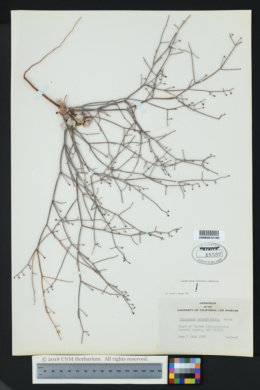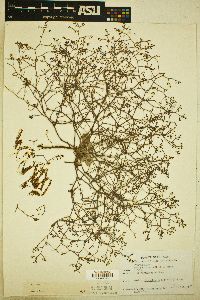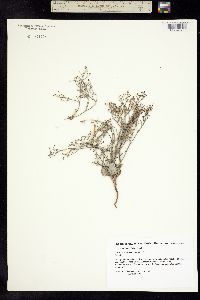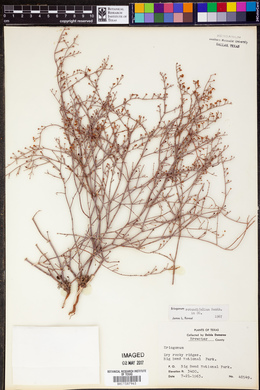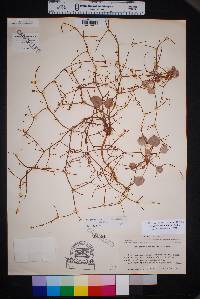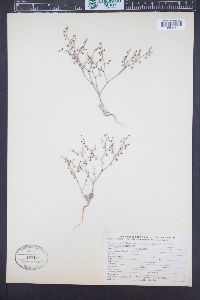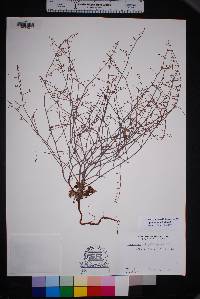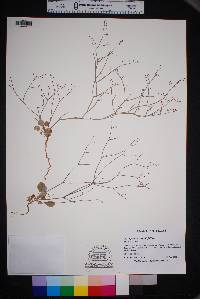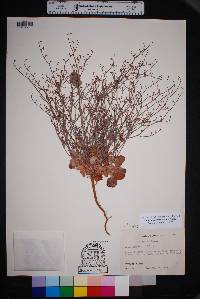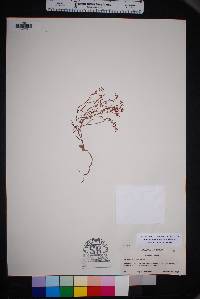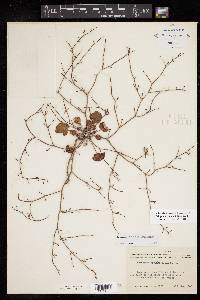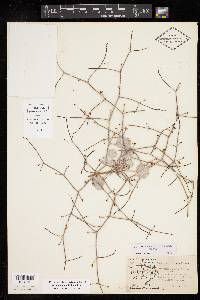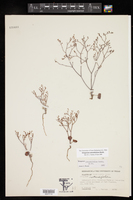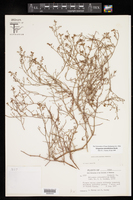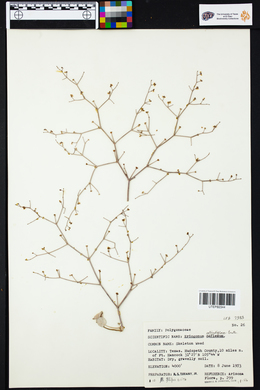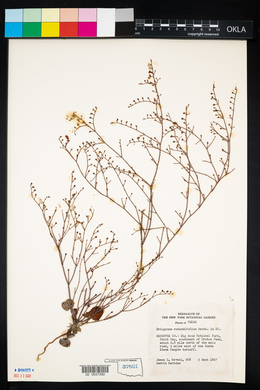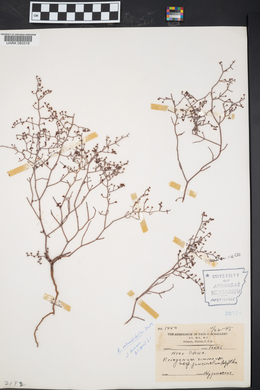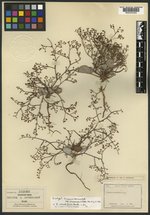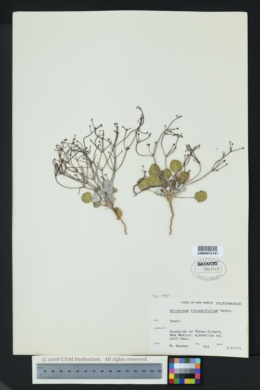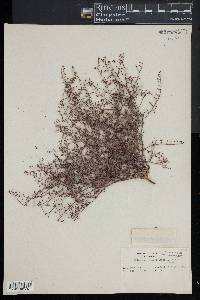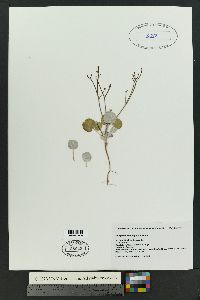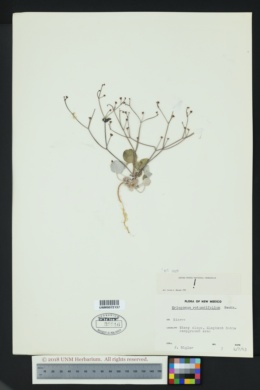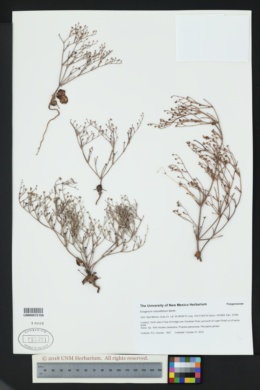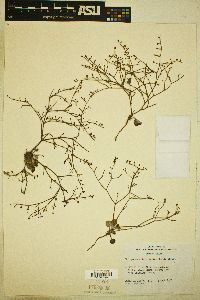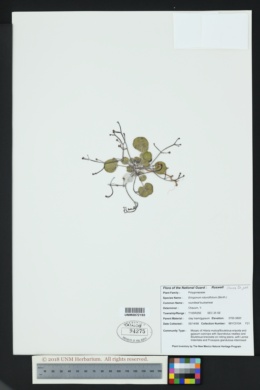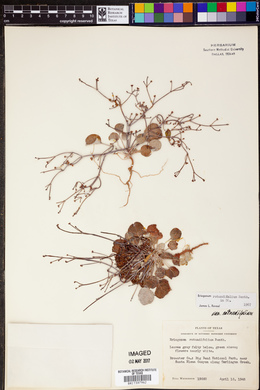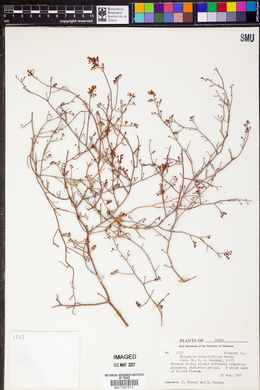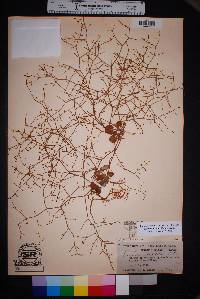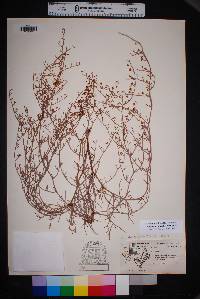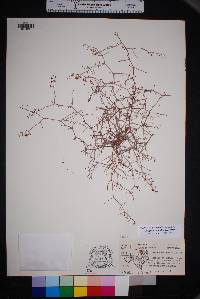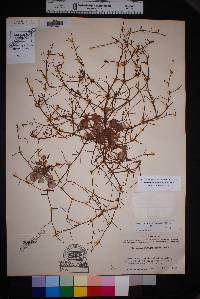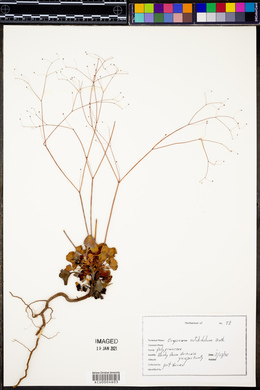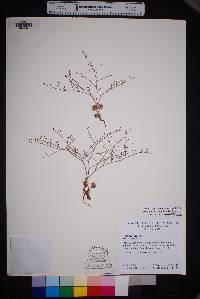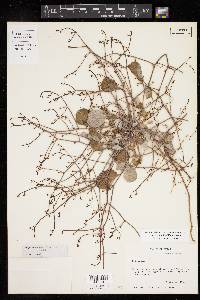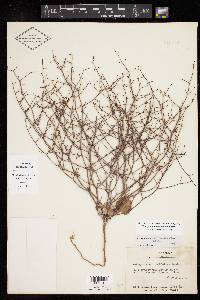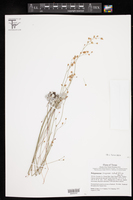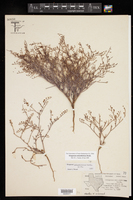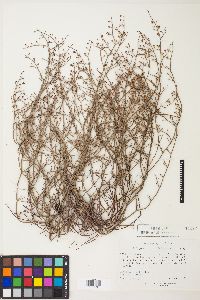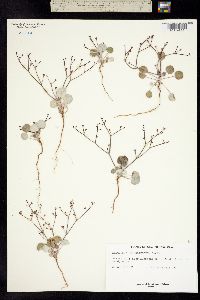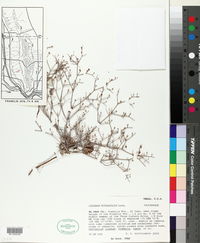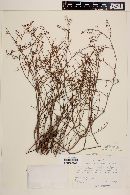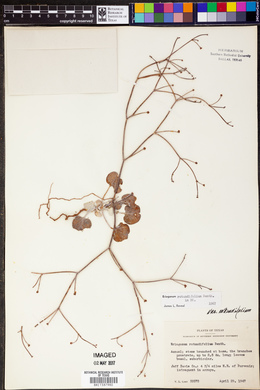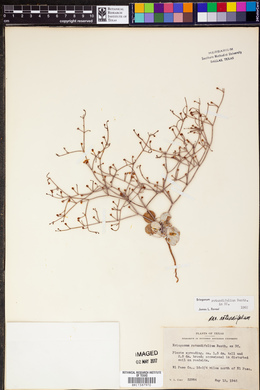Eriogonum rotundifolium
|
|
|
|
Family: Polygonaceae
Round-Leaf Wild Buckwheat, more...roundleaf buckwheat
[Eriogonum cernuum subsp. glaucescens, moreEriogonum rotundifolium var. angustius Goodman] |
Herbs, spreading, annual, 0.5-4 dm, glabrous and often glaucous, greenish to grayish. Stems: caudex absent; aerial flowering stems erect, solid, not fistulose, 0.1-0.5(-0.7) dm, glabrous. Leaves basal; petiole 1.5-4 cm, floccose; blade cordate to orbiculate, 1-2(-3) × 1-2.5(-3) cm, densely white-tomentose abaxially, floccose or subglabrous and greenish adaxially, margins plane. Inflorescences cymose, open to diffuse, usually flat-topped, 5-35 × 5-35 cm; branches glabrous; bracts 3, scalelike, 1-2.5 × 0.5-2 mm. Peduncles erect, straight, stoutish, 0.3-1.5 cm, glabrous. Involucres turbinate to campanulate, 1-2 × 1.5-2.5 mm, glabrous; teeth 5, erect, 0.4-0.8 mm. Flowers 1-2.5 mm; perianth white to pink with greenish to reddish midribs, becoming rose to red, glabrous; tepals dimorphic, those of outer whorl flabellate, those of inner whorl lanceolate; stamens included, 1.2-1.7 mm; filaments pilose proximally. Achenes dark brown, 3-gonous, 1.5-2 mm, glabrous. 2n = 40. Flowering May-Oct. Sandy to gravelly flats and slopes, mixed grassland, saltbush, creosote bush, and mesquite communities, juniper woodlands; 600-1800 m; Ariz., N.Mex., Tex.; Mexico (Chihuahua, Coahuila). Eriogonum rotundifolium is the southern counterpart to E. cernuum, being common to abundant and occasionally even weedy. Its overall range, however, is significantly smaller. It occurs in Arizona only in Cochise County, but is found more widely in New Mexico, and is common in the trans-Pecos region of western Texas, with scattered populations in Dimmit, Ector, Foard, and Knox counties outside that region. A sterile Edwin James specimen gathered in 1820 (NY) supposedly was collected near the Rocky Mountains and may be Eriogonum rotundifolium. Also seen at NY is an unattributed, redistributed collection of this species labeled only 'Colorado.' Until better documented material from that state is seen, the species is considered not to be a member of the Colorado flora. F. A. Elmore (1943) reported that the round-leaf wild buckwheat was used by the Navajo (Diné) people as an emetic. My own consumption of a few seeds, as a self-experiment, produced no particular urge to vomit. Inasmuch as the treatment was taken after swallowing ants, it is difficult to know whether the ants or the seeds were the emetic. G. M. Hocking (1956) reported that the leaves were used for sore throats and the stems were eaten raw (the latter proving in the same self-experiment not to be particularly tasty, leaving a slightly sour aftertaste). Hocking also reported that the roots were used medicinally but mentioned no specific ailment.
Correll and Johnston 1970, Allred and Ivey 2012, Martin and Hutchins 1980 Duration: Annual Nativity: Native Lifeform: Forb/Herb General: Annual herb, 10-40 cm tall and spreading up to 1 m wide, from a taprot; stems much-branched, leafless, hairless, and covered with a white-waxy coating (glaucous). Leaves: In a basal cluster, on petioles 1-4 cm long; blades orbicular, 1-3 cm long and about as wide, white-tomentose on both surfaces but more densely hairy on the underside. Flowers: White to pink, arranged in small clusters of 5-10 flowers held together by a cup-shaped structure called an involucre; involucres arranged in several open to densely branched cymes (flat-topped inflorescences) on branches that radiate outward from the center of the plant, forming a low, flat-topped crown; each individual flower is 1-2 mm long, with 6 petal-like tepals which usually start out white and mature to a brownish-white, reddish, or rose color. Fruits: Achenes 3-angled, 2 mm long, dark brown and glabrous. Ecology: Found in sandy to gravelly soils on dry mesas, slopes, and occasionally roadsides, from 3,500-6,500 ft (1067-1981 m); flowers April-October. Distribution: e AZ, NM, w TX, and n MEX Notes: This annual Eriogonum is distinguished by its growth form, with spreading stems that point all directions and branch often and dichotomously from near the base of the plant out to the branch tips; this creates a low, airy mound shape for the entire plant. A cluster of round hairy leaves radiates out from the base of the plant, but the stems are completely leafless. Stems are hairless as well, but have a white-waxy coating. Flowers are white, aging brownish or reddish, and clustered at the branch tips. Ethnobotany: Leaves were used to treat sore throats; seeds used as a ceremonial emetic. Etymology: Eriogonum is from the Greek erion, wool, and gony, knee, alluding to the hairy nodes of the first species described, E. tomentosum; rotundifolium means round-leaf. Synonyms: Eriogonum cernuum subsp. rotundifolium, E. cernuum subsp. glaucescens Editor: AHazelton 2017 |

